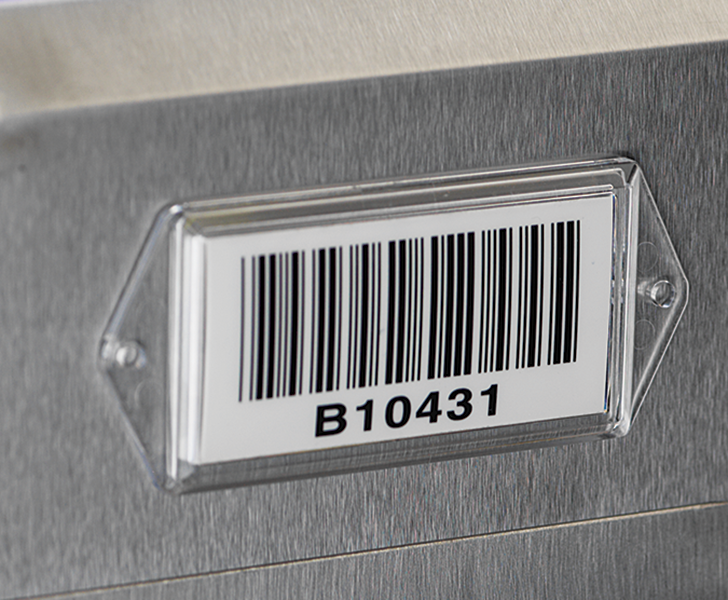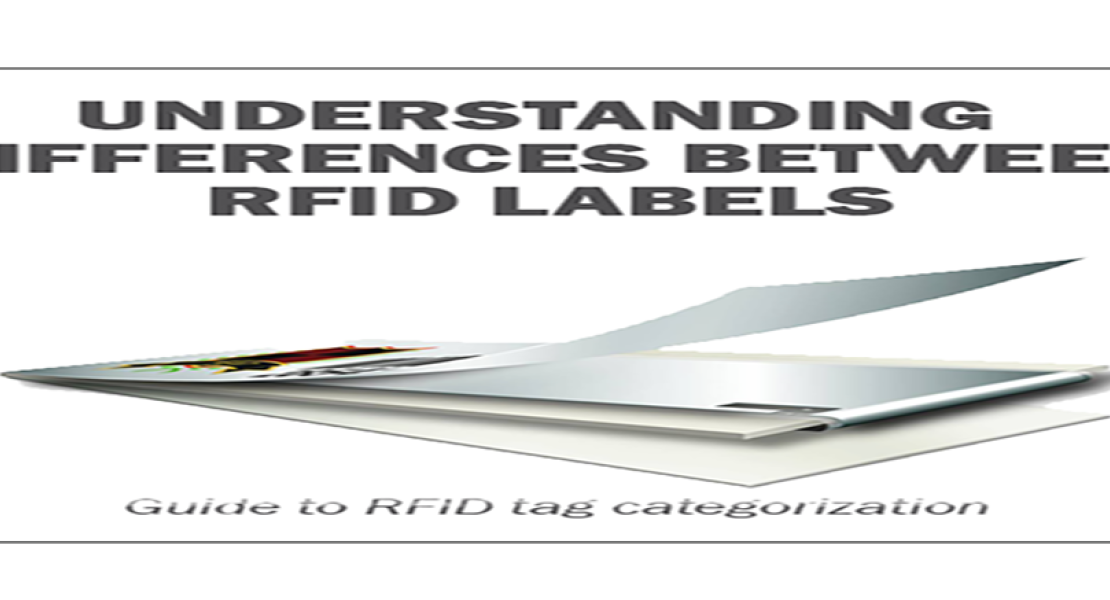
Modern RFID labels these days often are referring specifically designed and manufactured RFID adhesive-backed tags or stickers.
In each RFID tag is a chip, antenna and usually the material those items are adhered to, these three items are often referred to as the inlay. RFID tags and labels incorporate the inlays into the tag construction during the converting process, adding additional materials for protection and functionality along with print and graphics to help identify, match and, perhaps, brand the tag for the company for which they were produced.
Metalcraft and its competitors in the tag and label industry use terms to properly name tags according to the properties of the integrated circuit /chip they contain (passive tags or serialized tags, for instance), but they also name tags according to descriptors such as design and uses; therefore, Universal RFID Hard Tags encase tags in a polycarbonate housing for especially harsh environments, RFID Hang Tags hang from assets as opposed to RFID labels that are not only usually smaller, but are also adhesive-coated to stick to assets.
Chip manufacturers and label convertors, the industries that usually make RFID tags, commonly use all sorts of materials in addition to the inlay materials to make tags. Likewise, other construction elements come into play during fabrication: adhesives, foam, heat, pressure, digital printing techniques, etc.
RFID Label Size
One distinguishing RFID tag descriptor is the size. The size of active RFID tags vary because of their use, but are usually much larger than passive RFID tags since they carry batteries. To denote size, many RFID tags bear such names as dust/powder (called so because of the size of the chip), micro, mini and standard (although standard could designate more than size) tags.
Tags don’t depend on the human eye for reads, so the data they contain can be placed on small and discretely positioned platforms for information transmission.
The size often has some relationship to how far a radio wave can travel from the antenna. A rule of thumb often cited is “the larger the tag, the further the read”; this, however, does not always hold true depending on environmental factors and other variables.
Bearing names like micro, mini, and standard, larger passive tags average 3 inches in length and 2 inches in width - generally, sticker to credit card size. Automobile windshield and mirror tags will be some of the larger tags. Slim tags can be as thin as 0.05 in to eliminate drag when system components are in close proximity.
Tag Encasement Materials

Glass, fiberglass, metallic film, foam, rubber, ceramics, paper and polymers are encasement materials used in RFID tags. Often a specially engineered polyester polymer, a thermoplastic, is used for the final, encapsulating layer of one of the most common tags in use, a polyester tag. Another polymer commonly used is a polycarbonate resin for rugged polycarbonate tags.
Engineered to resist abrasion and very high temperatures, these thermoplastics can ultimately be repurposed when discarded; other materials are more difficult to repurpose such those used in epoxy RFID tags, a thermosetting polymer.
Ceramic labels and hard tags are often used when extremely high temperatures are required since they withstand temperatures beyond the range of polymers. Closed cell foam is used as a substrate itself taking the form of the final tag, but it is especially helpful when dealing with tags intended to be in contact with metal.
Used in the interior of some tags, as an isolator, the foam separates the parts of a tag which interfere with one another or the tag with an asset that would be problematic in composition. In-mold RFID tags seamlessly embed into the asset itself to be both electronically and humanly read even beyond the life of the asset.
Label Attachment
When RFID tags are thought of, adhesion is thought of because specialized, permanent pressure sensitive adhesives RFID tags are used prolifically to attach adhesive-backed tags to assets. Some adhesives will withstand a great deal of pull pressure even in extreme environments, while others will release more easily. The pull strength selected will depend upon the intended use of the asset and its potential lifespan. Some adhesives are applied to tamper-evident tags to leave an unremoveable adhesive imprint if the tag is removed.
RFID tags are attached to assets in other ways too. Many hard tags, especially those used with active RFID tags, are attached with metal fasteners such as screws. Button tags used in laundry venues as well as others places can be glued, but also sewn, heat-sealed or tied. Die cut tags with circular holes allow hang tags to dangle from lanyards, cords, cables, and zip ties. Popular fob tags swing from key chains. Die cut RFID hang tags can also be cut to form a hang hook in the tag itself, thus enabling the tag to hang itself.
Application Suitability
As indicated, some tags are more suitable for particular uses than others. Vendors will identify RFID tags to indicate their most common uses. To this group belong asset tags, inventory tags, container tags. Access tags and credential tags also belong in this classification.
Wristbands, windshield and mirror tags, metal mount tags, flex tags and folding tab tags are all unique in their own right--some can be snapped on, others cling to uneven surfaces, and a few go around curves or fold. It is amazing how many descriptors an RFID tag can take before it takes its suitable place in any particular enterprise. But, by naming through descriptors, a tag consumer can take advantage in knowing the niches into which tags fall.
Having made RFID tags for decades, Metalcraft is a veteran, independent convertor with an outstanding record for making quality labels for many purposes and environments. Not only does it use outstanding printing methods and substrate materials for its tags, it also guarantees to write field programmable chips properly according to customer provision and to align them for proper RF transmission.
Metalcraft consultants work with convertors to help steer you through tag options. With their in-depth understanding of tags and business applications, this auxiliary staff will lead you through all the tag possibilities until you find a match for your business needs. Contact them and you will have a friend in the business at your back.
If you have additional questions about the differences between RFID tags, contact us today at [email protected].
 | About the Author: Aaron HobertAaron Hobert is our RFID Technical Specialist. Hobert joined Metalcraft in September of 1994 as a Litho Press Operator, became the Autograph Team Lead in 1998 and in April 2005 he became the RFID Sales Support Rep. He was named our RFID Technical Specialist in 2008. Aaron lives outside Charles City with his wife Diane. Mobile Phone: 641-330-2660 Email: [email protected] Office: 3360 9th St. SW, Mason City, IA 50401 Office Phone: 641-423-9460 |




